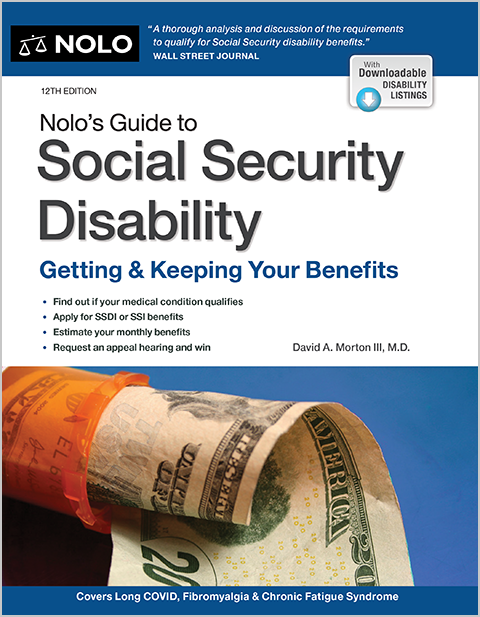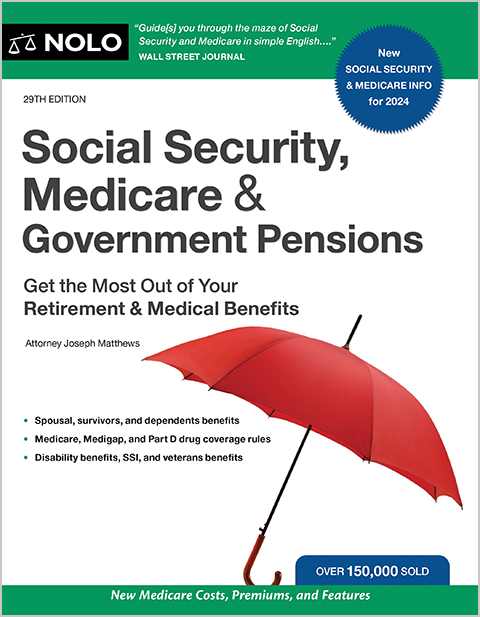Can't wait for your retirement funds? Learn how to get your retirement money early.
If you need to dip into a retirement account before you retire—whether it's a 401(k), IRA, or another type of plan—you might have to pay a penalty. But there are a few ways to avoid the early distribution penalty.
If you take money out of a retirement account before you turn 59 1/2, your withdrawal is called an early distribution, and you'll have to pay a 10% early distribution tax on any money withdrawn, unless you can meet one of the exceptions. Here's an explanation of some of the most commonly used exceptions to the early retirement tax.
Retiring or Taking a Pension Before 59 1/2
If you take a distribution from your retirement plan early (meaning before the day you turn 59 1/2), you'll generally have to pay a 10% early distribution tax above and beyond any regular income taxes you may owe on the money. That extra 10% might be called a tax, but it looks and feels like a penalty. In fact, the early distribution tax is the cornerstone of the government's campaign to encourage us to save for retirement—or put another way, to discourage us from using up all our savings before our golden years.
Of course, it's generally a bad idea to dip into your retirement plan early except in extraordinary circumstances. But when using your retirement funds is your only option, it's good to know that there are several ways to avoid the extra 10% tax on early distributions.
Exceptions to the Early Distribution Tax
If you collect your pension early—before age 59½—you may not have to pay the early distribution tax if any of the following apply:
- You choose to take substantially equal periodic payments.
- You're at least 55 years old when you leave your job.
- You become disabled.
- You're a qualified reservist called to active duty.
- The distributions are dividends from an ESOP.
- You withdraw the money to pay medical expenses.
- You use the money to purchase long-term care insurance.
- You withdraw the money to pay child support or alimony or as part of a QDRO (Qualified Domestic Relations Order).
- You use the money to pay a federal tax levy.
- The money is actually a refund of a contribution.
- You use the money to pay expenses for the birth or adoption of a child.
- You withdraw money to pay emergency expenses.
- You have experienced domestic abuse.
- You have a terminal illness.
- Your principal residence is in a qualified disaster area.
- You're no longer living and your beneficiary or estate receives distributions after your death.
Let's look at some of these exceptions in the sections below.
Substantially Equal Periodic Payments
The substantially equal periodic payment exception is available to anyone with an IRA or a retirement plan, regardless of age.
Theoretically, if you begin taking distributions from your retirement plan in equal annual installments, and those payments are designed to be spread out over your entire life or the joint life of you and your retirement plan beneficiary, then the payments won't be subject to an early distribution tax.
If you think you might need to tap your retirement plan early, this is the option that is most likely to work for you.
One caveat: If you want to begin receiving installment payments from your employer's plan without penalty, you must terminate your employment before payments begin. But if the payments are from an IRA, the status of your employment is irrelevant.
Leaving Your Job After Age 55
If you retire after age 55 and take a distribution of some or all of your 401(k) plan, the amount you take will be subject to income tax. But you won't have to pay the early distribution tax. (This exception is relevant only if you're between ages 55 and 59 1/2. After age 59 1/2, the early distribution tax doesn't apply to any retirement plan distribution.)
The age-55 rule applies only to qualified employer plans (like 401(k) plans), not to IRAs. And it only applies to the plan sponsored by the employer you just terminated your employment with. You don't have to retire permanently. You can go to work for another employer, or even return to work for the same employer at a later date.
But, being a legal rule, it comes with a number of exceptions. For example, if you rolled over a 401(k) into an IRA first, you're stuck and must wait until you're 59 1/2 to withdraw money—unless some other exception applies in your specific plan.
And if you were to retire and leave your money in your former employer's 401(k), the terms of the employer plan might preempt the age-55 rule. For example, the plan might require you to wait until you reach a specific age to take distributions—62 or 65 are common cutoffs. But some plans give an option to take a distribution once a year. To find out the exact rules, check with your plan administrator.
As with other exceptions, the devil is in the details. For this exception, you need not be age 55 on the day you leave your job, as long as you turn 55 by December 31 of the same year. And the strategy falls apart if you retire the year before the year you turn 55, even if you postpone withdrawing the retirement benefits until you reach age 55.
Certain public safety employees who participate in government-sponsored retirement plans are able to take penalty-free distributions from their retirement plans if they either separated from service after age 50 (not 55) or they completed 25 years of service with the government employer sponsoring the plan.
Disability as an Exception to the Penalty
If you become disabled, all subsequent distributions from your retirement plan are free of the early distribution tax. But what does it mean to be disabled? And who decides? The IRS defines disabled as the inability to "engage in any substantial gainful activity by reason of any medically determinable physical or mental impairment which can be expected to result in death or to be of long-continued and indefinite duration." Hmmm.
IRS regulations clarify that "gainful activity" refers to the type of work you were doing before becoming disabled. So, you don't necessarily need to be unfit for all work, just work similar to what you customarily did before you became disabled.
And your disability must be deemed permanent at the time you take the distribution from your retirement account—regardless of whether it's later found to be permanent. For example, the IRS denied the exception for one taxpayer whose disability was not deemed permanent at the time the distribution was paid—even though the taxpayer later qualified for Social Security disability benefits (which are only granted for long-term disabilities).
Taking Dividends from ESOPs
An employee stock ownership plan, or ESOP, is a type of stock bonus plan that may have some features of a more traditional pension plan. ESOPs are designed to be funded primarily or even exclusively with employer stock. An ESOP can allow cash distributions, however, as long as the employee has the right to demand that benefits be paid in employer stock.
Distributions of dividends from employer stock held inside an ESOP aren't subject to the early distribution tax, no matter when you receive the dividend.
Withdrawing Money Early for Medical Expenses
If you withdraw money from a retirement plan to pay medical expenses, a portion of that distribution might escape the early distribution tax. But once again, the exception isn't as simple or as generous as it sounds. The tax exemption applies only to the portion of your medical expenses that you could deduct if you itemized deductions on your tax return. Medical expenses are deductible if they're yours, your spouse's, or your dependent's, but they're deductible only to the extent they exceed 7.5% of your adjusted gross income. So your retirement plan distribution will avoid the early distribution tax only to the extent it also exceeds the 7.5% threshold.
On the plus side, the medical expense exception is available even if you don't itemize deductions. It applies to those amounts that would be deductible if you did itemize.
Qualified Long-Term Care Distributions
Beginning December 29, 2025, individuals can take qualified distributions from their retirement plans to pay the premiums for a "high quality of care" long-term care insurance contract. You'll be able to withdraw up to the lesser of 10% of your vested balance or $2,500 (indexed for inflation) annually.
To qualify, you can't withdraw from your retirement plan more than the amount of the premiums. This option is currently only available for contracts insuring the retirement plan participant and their spouse (if a joint tax return is filed).
Spousal or Child Support as Part of a QDRO
If you're paying child support or alimony from your retirement plan, or if you intend to distribute some or all of the plan to your former spouse as part of a property settlement, none of those payments are subject to the early distribution tax as long as you and your ex-spouse have a Qualified Domestic Relations Order (QDRO) in place that orders the payments. A QDRO usually arises from a separation or divorce agreement and involves court-ordered payments to an "alternate payee," such as an ex-spouse or minor child. This exception does not apply to IRAs. (See below.)
Taking a Return of a Contribution From a Plan
You may have received a refund (or "return") of a contribution to your retirement plan because you contributed more than you were permitted to deduct during the year. Or maybe you contributed money to a Roth IRA but, by the end of the year, you realized you needed the money. Those "corrective" distributions aren't subject to the early distribution tax, although they might be subject to other taxes.
In order to avoid the early distribution tax, any excess you contributed to a plan must come out of the plan within a prescribed time—usually before you file your tax return. Corrective distributions are usually handled by the plan administrator.
Withdrawals After Death
Another way to escape the early distribution tax, albeit a rather unattractive one, is to die before the distribution is made. None of the funds distributed from your retirement plan after your death—for instance, to a named beneficiary—will be subject to the early distribution tax, as long as the account is still in your name when the distribution occurs.
If you're the beneficiary of your spouse's retirement plan or IRA, then upon your spouse's death, you can roll over a distribution from your spouse's retirement plan or IRA to an IRA or plan of your own and avoid paying the tax. This benefit is available only to a spouse.
For a complete guide to making sense of the rules that govern distributions from retirement plans, see IRAs, 401(k)s & Other Retirement Plans: Taking Your Money Out, by Twila Slesnick and John C. Suttle (Nolo).
Talk to a Tax Attorney
Need a lawyer? Start here.
How it Works
- Briefly tell us about your case
- Provide your contact information
- Choose attorneys to contact you
- Briefly tell us about your case
- Provide your contact information
- Choose attorneys to contact you


